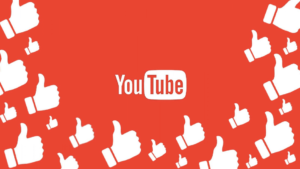Social listening, also known as social media listening, is the process of identifying and evaluating what is being said on the Internet about a company, person, product or brand.
Conversations on the Internet generate massive amounts of unstructured data. For this reason, it’s important to understand what a company is trying to achieve with a social media listening program. Depending on your goals, the right tool can be a set of free Google Alerts or an expensive software suite that includes ad hoc analysis and full integration with legacy CRM (customer relationship management) applications.
Both social media and in-person gathering of information have value, but social listening is fast becoming an important customer intelligence tool. The many ways to use social media to gain insight are as follows:
- monitor online customer support forums;
- Use software tools to collect comments from social networks such as Facebook and Twitter; and
- Customers are encouraged to recommend new product features and vote on their favorites.
Social media monitoring tools can search for text for specific keywords on social networking sites, blogs and forums, and other social media. Monitoring software converts specific words or phrases in unstructured data into numerical values associated with structured data in a database. This allows the data to be analyzed using traditional data mining techniques.
Why is social listening important?
Social listening helps businesses understand the conversations surrounding their brand and the products and services they offer. It provides valuable consumer data that companies can use to measure brand awareness and improve their products and services.
Companies benefit from the following benefits through social listening:
- Campaign analytics provide feedback on how specific marketing campaigns resonate with social media audiences.
- Competitive analysis provides insight into competitor performance based on social media conversations.
- Event monitoring allows companies to see in real time how audiences are reacting to specific events, eg. B. Virtual Meeting Response.
- Industry trends emerge when companies listen to discussions that mention their industry and use social features like hashtags.
Businesses can use the conversational data they collect through social listening to change the way they approach these things. For example, if the conversation about a particular marketing campaign is negative, the company may change the current campaign to address the issue. It can also use this information to create better campaigns in the future.
If the social conversation about a company’s competitor is positive, it can mimic the competitor’s behavior. Gathering social intelligence from social media conversations is a great way to gauge real audience sentiment and reactions.
Social listening and social monitoring
Social surveillance explains what people say on social media. Social listening explains why people say what they say. Monitoring is tactical, while listening focuses on long-term strategic decisions.
Each example is as follows:
Social supervision. A restaurant monitors Twitter for mentions of its new product — a hamburger with cream cheese on the bun. Once identified, the company may or may not respond to mentions. Monitoring focuses on gathering information. There is not necessarily an appropriate strategy. The company can see all the different ways their hamburgers get people talking online.
Social listening. The same restaurant monitors social media for mentions of its new burger and aggregates the data for sentiment analysis of what people are saying. Restaurants use the information collected to develop broader marketing strategies. Using sentiment analysis, it can determine:
- whether people like burgers;
- what they like;
- what they like to eat;
- how long hamburgers remain on the menu; and
- New ideas for the next featured product.
In the audio samples, the company is not involved in every mention of the product. No attempt is made to influence conversation or change people’s perception of the product. Instead, it’s designed to read emotions and gain insight with the goal of developing strategies to improve emotions in the future.
Social listening and social monitoring are not mutually exclusive. The social listening strategy goes one step further to better understand brand-centric conversations on social networks.
How does social listening work?
The goal of social media listening is to monitor relevant conversations on social media platforms, understand underlying emotions or emotions, and respond with marketing strategies that positively impact the emotions. The social listening process consists of three main steps:
- Monitor. This includes monitoring multiple social media channels for mentions of brand names, topics, competitors, keywords and products in social conversations. Companies can do this type of brand monitoring manually by checking social media sites on a daily or more frequent basis, or they can use tools to automate the process.
- Analyze. This is the step that differentiates social listening from monitoring. Businesses analyze the information collected during monitoring to find out what customers like and dislike about a product or service, and look for patterns and trends. There are various customer sentiment analysis tools that use automated software to give businesses insight into the sentiment behind texts written or spoken by customers.
- Reply. The company can then decide on an answer. This can be as small a response as an online customer communication, or it can be a repositioning of an entire brand strategy.
Businesses may use information collected through social listening for other purposes, including:
- Identify potential customers and dissatisfied existing customers;
- Measure the quality of customer experience (CX); and
- Gather information that can be used for ROI monitoring or A/B testing different versions of campaigns to compare their performance.
Social listening skills
Best practices for effective social listening include the following:
- Know your audience. Learn which buyer personas appeal to brands and their products and services. Learn how to target your audience on the platform of your choice.
- Determine what you want to hear. There will be tons of data from which insights can be drawn. It’s important to have a clear understanding of what your company wants to learn from data. This helps companies ignore noise in the dataset.
- Find data using keywords. Keywords are a great way to filter conversations on social media. They can be related to a company, its brands, products and services, or to a larger industry.
- Use social listening tools. Tools to collect unstructured social data can help extract insights from the collected data.
- Develop a strategy. After analyzing social data, it is important to use the results to develop strategies. If businesses find social conversations to be positive, they should find out what customers like about it. When a company finds that customers are unhappy, it should investigate the problem and look for ways to change. This could mean a change in product description, price or functionality. Or it could mean using other marketing tactics to better explain their product, such as: B. Optimizing data-driven content creation.
Social listening tool
Atribus, and another social listening tool, can be used as stand-alone social listening tools. In some cases, they can be integrated with enterprise CRM systems. As part of a CRM platform, these tools allow companies to collect CX data from multiple channels and organize it in one place for analysis. Some provenance tools collect information from Facebook, Twitter, TripAdvisor, and Booking.com.
Some social tools allow users to create custom listening templates that track specific keywords and topics. You can also provide business intelligence dashboards. Another common feature is identifying and tracking influencers in related industries. Users can track key performance indicators and metrics about their key influencers, such as: B. The number of interactions with their posts and how often they post on a topic.
How to start listening with social media
Before purchasing a social listening tool, companies should know what they want to achieve with social listening. If a paid enterprise software product doesn’t seem like it, there are plenty of free social listening options out there.
Examples of free tools are TweetDeck and Google Alerts. Like paid options, these tools allow users to monitor social conversations for simple topics and keywords, and schedule automatic postings. These free tools have the following disadvantages:
- They will hear a lot of noise.
- They have limited or no analytical skills.
- You do data visualization
Businesses can also use sentiment analysis tools and APIs to help them with social listening.
Free tools like Tweet Deck and Google Alerts usually only work with one social platform. Businesses looking to develop tools for an omnichannel marketing strategy should consider paid tools with more data visualization and analytics capabilities. Some providers offer social listening services for specific industries.
Gathering social media data is an important part of creating a customer experience strategy. Learn how companies develop great customer experience strategies.




